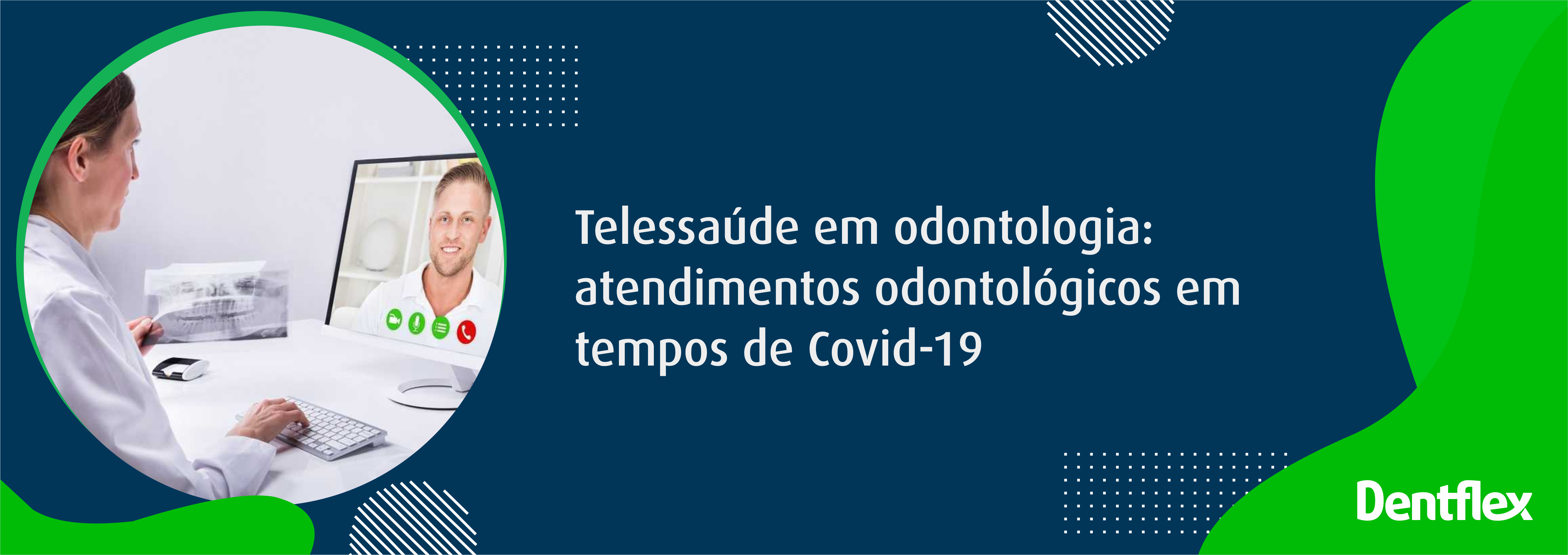Telehealth in dentistry: dental care in Covid-19 times

Did you know?
Are dental surgeons among healthcare professionals at high risk of contamination by the virus that causes COVID-19? For this reason, it is recommended that, during the COVID-19 pandemic, only urgent and emergency procedures be carried out. The care of these patients in Primary Health Care (PHC) can avoid overload in hospital emergencies.
Dentistry represents, at this moment, a pandemic due to the new coronavirus, an essentially important area in terms of fighting and fighting this new infectious disease. It is worth mentioning that dental professionals are the ones who have the closest contact with the patient's oronasal, oropharyngeal complex. In addition, the salivary secretion is directly in contact with the professional, both in moments of service itself, as in the form of aerosol disseminated in the air of the work environment.
In view of all the risks that this service may bring to the oral health team (dental surgeon, oral health assistant), auxiliary teams in health units or offices (receptionists, secretaries, health agents, etc.), and also for patients; recommendations for safe care, from the point of view of biological protection, were recommended so that one can control the spread of this virus in the dental care environment, avoiding contamination.
For this, it is necessary before any procedure, perform a screening of the patient before taking him to the dental chair, in an airy environment and respecting a distance of at least 2 meters. Asking specific questions about signs and symptoms related to Covid-19; about contact with patients who were positive or suspicious for the virus. In addition, in anamnesis, try to understand whether the search for dental care fits as an urgency / emergency, or is something that can wait for a safer period (elective procedure).
The Brazilian Association of Intensive Care Medicine (AMIB) and the Federal Council of Dentistry (CFO) recommend that, if the procedure is elective (can wait), both the suspected or positive coronavirus patient as well as the healthy one, care should be postponed to one. date when the pandemic situation in your region is not so critical. Home isolation is recommended and, in the event of worsening positives or suspicions, seek health services.
As for the procedures that are even urgent and emergency dental, both in healthy patients and in suspect or positive for coronavirus; treatment should be carried out with standard and additional precautions, use of absorbable sutures, disinfection of the equipment and peripherals at the end of each service, correct disposal of PPE's and infectious material, hand washing before and after the procedure, allow time for treatment of patients in sequence, support support after care (phone). In addition, suspects and positives should remain in isolation at home and, in case of aggravation, seek health services. It is up to the dental surgeon to evaluate and make decisions regarding the cases that may arise.
- Dental emergencies are considered: hemorrhage, diffuse intra or extra-oral cellulitis and traumas with the potential to compromise the airways;
- Dental emergencies are considered: pain of endodontic origin (pulpitis, abscesses), traumatic (dental trauma), periodontal (gum or periodontal abscesses, ulcerative gingivitis and periodontitis, pericoronitis) or surgical (alveolitis, suture removal); biopsy needs of lesions with suspected malignancy and need for oral adequacy for cancer patients or pre-transplant patients of solid organs.
As measures to reduce the risk of contamination in dental care, the National Health Surveillance Agency and scientific studies recommend some measures:
- Perform hand hygiene frequently with water and liquid soap OR alcoholic preparation (70%), wear a hat, goggles or face shield (preferably face shield), waterproof apron, procedure gloves, N95 masks (PFF2) or equivalent.
- Before and after the use of masks, hand hygiene must be carried out with water and liquid soap OR alcoholic preparation (70%). All professionals involved should be instructed on how to use, remove and dispose of them.
- Constant suction of saliva (high power suction) and if possible work with 4 hands (similar PPE for both).
- Avoid intraoral radiographs (stimulates salivary secretion and cough). Opt for extraoral. 5. Use preoperative antimicrobial mouthwash. It is recommended to use oxidizing agents at 1% (ex: hydrogen peroxide) or povidone at 0.2%, in order to reduce salivary microbial load. Chlorhexidine may not be effective. The indication of mouthwash with 1% hydrogen peroxide is for single use only before the procedure, continuous use is not recommended.
- In cases where isolation with a rubber dam is not possible, manual devices (periodontal curettes for removing cavities and periodontal scraping) are recommended in order to minimize aerosol generation.
- Measures to minimize aerosol generation: place the patient in the most appropriate position; never use a triple syringe in the form of a mist (spray) by pressing both buttons simultaneously; regular cooling water outlet.
- Autoclave all instruments considered critical, including high and low speed handpieces.
Source: Telessaúde. Available at: https://telessaude.se.gov.br/2020/06/03/atendimentos-odontologicos-em-tempos-de-covid-19/. Access on: 07/07/2021.
